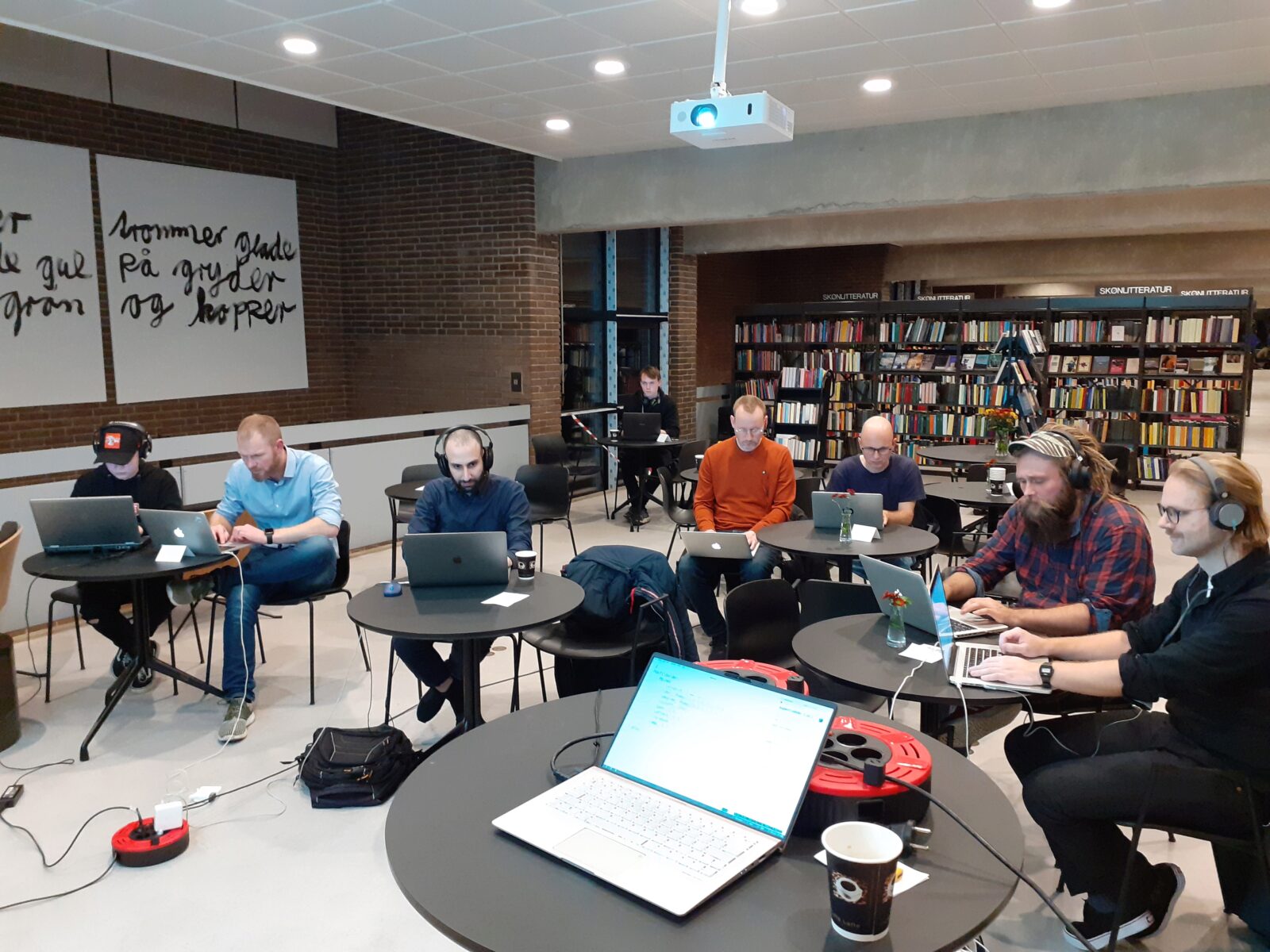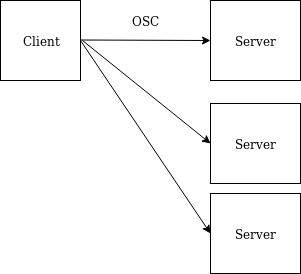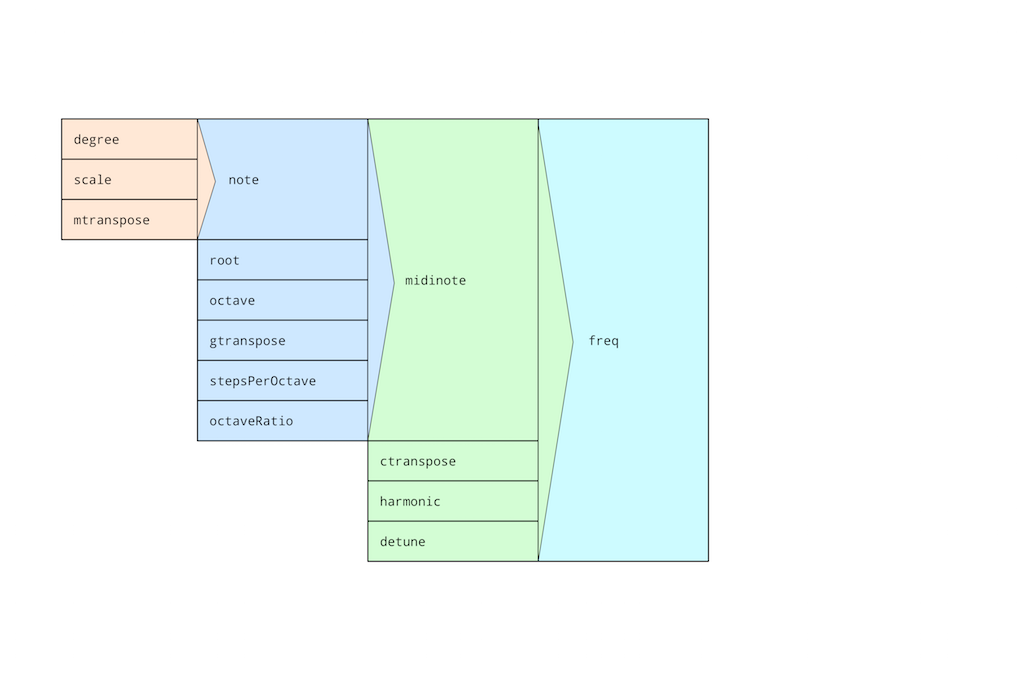November 6, 2019

Here are the materials for the SuperCollider workshop at Herlev Bibliotek, Denmark, November 2019.
The SynthDef used for the workshop [can be downloaded here.][1]
SuperCollider workshop
Herlev Bibliotek, Denmark, 2019
About me
- Name: Mads Kjeldgaard
- Occupation: Composer and developer
- Work: The Norwegian Center for Technology and Art (Notam)

Notam
- Development for art projects (hardware, software, tech and artistic guidance)
- Communities / meetups (SC meetup among others)
- Studios / 3D sound / VR / Visuals
- Courses
My practice
- Computer music / livecoding
- Field recording
- 3D sound composition
- Sound environments
Contact info
- mail: mail@madskjeldgaard.dk
- web: madskjeldgaard.dk
- github: github.com/madskjeldgaard
Design
Short history of SuperCollider
SC was designed by James McCartney as closed source proprietary software
Version 1 came out in 1996 based on a Max object called Pyrite. Cost 250$+shipping and could only run on PowerMacs.
Became free open source software in 2002 and is now cross platform.
Overview
When you download SuperCollider, you get an application that consists of 3 separate programs:
- The IDE, a smart text editor
- The SuperCollider language / client (sclang)
- The SuperCollider sound server (scsynth)
Architecture

The client (language and interpreter) communicates with the server (signal processing)
This happens over the network using Open Sound Control
Multiple servers

This modular / networked design means one client can control many servers
Consequences of this modular design
Each of SuperCollider’s components are replacable
IDE <—> Atom, Vim, or Visual Studio
language <—> Python, CLisp, Javascript
server <—> Max/MSP, Ableton Live, Reaper
Extending SuperCollider
The functionality of SuperCollider can be extended using external packages
These are called Quarks and can be installed using SuperCollider itself
// Install packages via GUI (does not contain all packages)
Quarks.gui;
// Install package outside of gui using URL
Quarks.install("https://github.com/madskjeldgaard/KModules");
SC Plugins
SC3 Plugins is a collection of user contributed code, mostly for making sound
The plugins are quite essential (and of varying quality / maintenance)
IDE

Important keyboard shortcuts
- Open help file for thing under cursor: Ctrl/cmd + d
- Evaluate code block: Ctrl/cmd + enter
- Stop all running code: Ctrl/cmd + .
- Start audio server: Ctrl/cmd + b
- Recompile: Ctrl/cmd + shift + l
- Clear post window: Ctrl/cmd + shift + p
The IDE as a calculator
SuperCollider is an interpreted language
This means we can “live code” it without waiting for it to compile
A good example of this is using it as a calculator
Autocompletion
Start typing and see a menu pop up with suggestions (and help files)
The status line
Shows information about system usage
Right click to see server options + volume slider
About livecoding
What is it?
The act of using a piece of software, while you write/modify it
A quote
“In live coding the performance is the process of soware development, rather than its outcome.” - Alex McLean, Artist-Programmers and Programming Languages for the Arts, 2011
Livecoding isn’t special
It is used all the time now in web design, science and software development to prototype / finetune ideas interactively.
Livecoding SuperCollider
Since SuperCollider is an interactive programming language and not a compiled one (as opposed to Csound for example), you are in effect always livecoding in SuperCollider.
Livecoding music: Kind of special after all
Musical livecoding is intrinsically connected to improvisation.
It can be compared to playing a jazz concert on a guitar…
Except
… You are actually building the guitar itself, while playing it.
Quick history of live coding music
- Took off in the early 2000’s
- Around 2000: Slub started playing with screen projections
- Around same time: TSpawn trick -> Hot swapping code in SC
General strategies
- Building / reworking an instrument (using NodeProxy/Ndef)
- Writing or modifying patterns (using ProxySpace/Pdef)
- A mix of the above
What are the rules of live coding?
- There are none!
- Do whatever you like!
- Crush all conventions!
About patterns
From the Pattern help file:
“[The Pattern] classes form a rich and concise score language for music”
In other words:
Patterns are used to sequence and compose music
Abstracting the composition process
the conditions for a composition vs. a fixed composition
It’s just data
Easily transpose, stretch and warp the composition
Duration is not an issue
Composing a 4 bar loop is not necessarily any more or less work than a 4 hour one
Guides in the help system
Patterns are pretty well documented in the help system:
Event patterns
Like pressing the key of a piano
What data does that involve?
- Duration of key press
- Pitch of the key
- Sustain (are you holding the foot pedal?)
- etc. etc.
What an Event looks like
// See the post window when evaluating these
().play; // Default event
(freq:999).play;
(freq:123, sustain: 8).play;
Changing the default synth
The default synth sucks
You can change it by defining a new synth called \default
More info on my website
Introducing the allmighty Pbind
Arguably the most important pattern class in SuperCollider
Pbind data
Pbind simply consists of a list of key/value pairs
Keys correspond to Synth arguments
Most often, keys correspond to a Synth’s arguments.
Example: If a SynthDef has the argument cutoff, we can access that argument in a Pbind using \cutoff.
Some keys are special
dur
\dur is used in most SynthDef’s to specify the duration of a note/event.
Make sure this key never gets the value 0.
stretch
\stretch is used to stretch or shrink the timing of a Pbind
When does a Pbind end?
If one of the keys of a Pbind are supplied with a fixed length value pattern, the one running out of values first, will make the Pbind end.
Livecoding: Pdef
Livecoding patterns is easy. All you have to do is wrap your event pattern (Pbind) in a Pdef:
Pdef('myCoolPattern', Pbind(...)).play;
What this means
The Pdef has a name (‘myCoolPattern’) which is a kind of data slot accessible throughout your system
Everytime you evaluate this code, it overwrites that data slot (maintaining only one copy)
Value patterns
The building blocks of compositions
- List patterns
- Random patterns
- Envelope patterns
- Rests
- Data sharing between event parameters
- Patterns in patterns
List patterns
See all of them here
Pseq: Classic sequencer
// Play values 1 then 2 then 3
Pseq([1,2,3]);
// 4 to the floor
Pseq([1,1,1,1]);
Testing value patterns: asStream
You will see the .asStream method a lot in the documentation for value patterns.
// Pattern
p = Pseq([1,2,3]);
// Convert to stream
p = p.asStream;
// See what values the pattern produces
p.next; // 1, 2, 3, nil
Random value patterns: Pwhite and Pbrown
// (Pseudo) random values
Pwhite(lo: 0.0, hi: 1.0, length: inf);
// Drunk walk
Pbrown(lo: 0.0, hi: 1.0, step: 0.125, length: inf);
Random sequence patterns: Prand and Pxrand
// Randomly choose from a list
Prand([1,2,3],inf);
// Randomly choose from a list (no repeating elements)
Pxrand([1,2,3],inf);
Probability: Pwrand
Choose items in a list depending on probability
// 50/50 chance of either 1 or 10
Pwrand([1, 10], [0.5, 0.5])
// 25% chance of 1, 25% change of 3, 50% chance of 7
Pwrand([1, 3, 7], [0.25, 0.25, 0.5])
// 30% chance of 3, 40% change of 2, 30% chance of 5
Pwrand([4, 2, 5], [0.3, 0.4, 0.3])
Envelope pattern: Pseg
// Linear envelope from 1 to 5 in 4 beats
Pseg( levels: [1, 5], durs: 4, curves: \linear);
// Exponential envelope from 10 to 10000 in 8 beats
Pseg( levels: [10, 10000], durs: 8, curves: \exp);
Rest
Skip/sleep a pattern using Rest. If used in the \dur key of a Pbind, the value in the parenthesis is the sleep time
// One beat, two beats, rest 1 beat, 3 beats
Pbind(\dur, Pseq([1,2,Rest(1),3])).play;
Pkey: Share data between event keys
Using Pkey we can make an event’s parameters interact with eachother
// The higher the scale degree
// ... the shorter the sound
Pbind(
\degree, Pwhite(1,10),
\dur, 1 / Pkey(\degree)
).play
More info about data sharing in patterns: here
patterns in patterns: The computer music inception
You can put patterns in almost all parts of patterns.
This may lead to interesting results:
// A sequence with 3 random values at the end
Pseq([1,2,Pwhite(1,10,3)]);
// An exponential envelope of random length
Pseg(levels: [10, 10000], durs: Pwhite(1,10), curves: \exp);
Working with pitches and Pbinds
Pitch model

Changing scales
// Use the \scale key, pass in a Scale object
Pbind(\scale, Scale.minor, \degree, Pseq((1..10))).play;
Pbind(\scale, Scale.major, \degree, Pseq((1..10))).play;
Pbind(\scale, Scale.bhairav, \degree, Pseq((1..10))).play;
Available scales
// See all available scales
Scale.directory.postln
Changing root note
// Use the \root key to transpose root note (halftones)
Pbind(\root, 0, \degree, Pseq((1..10))).play;
Pbind(\root, 1, \degree, Pseq((1..10))).play;
Pbind(\root, 2, \degree, Pseq((1..10))).play;
Changing octaves
// Use the \octave key
Pbind(\octave, Pseq([2,4,5],inf), \degree, Pseq((1..10))).play;
Pbind(\octave, Pwhite(3,6), \degree, Pseq((1..10))).play;
Pbind(\octave, 7, \degree, Pseq((1..10))).play;
Playing chords
// Add an array of numbers to the degree parameter
// to play several synths at the same time (as a chord)
Pbind(\degree, [0,2,5] + Pseq([2,4,5],inf), \dur, 0.25).play;
Changing tempo
The tempo of patterns are controlled by the TempoClock class You can either create your own TempoClock or modify the default clock like below
TempoClock.default.tempo_(0.5) // Half tempo
TempoClock.default.tempo_(0.25) // quarter tempo
TempoClock.default.tempo_(1) // normal tempo
Learning resources
Videos
Tutorials by Eli Fieldsteel covering a range of subjects: SuperCollider Tutorials
Books
E-books
Paper books
Community
Awesome SuperCollider
A curated list of SuperCollider stuff
Find inspiration and (a lot more) more resources here:
Learning to code: Advice
- Practice 5 minutes every day
- Set yourself goals: Make (small) projects
- Use the community
#workshop-material #supercollider